Offer
Provide additional details about the offer you're running.
Provide additional details about the offer you're running.
Provide additional details about the offer you're running.
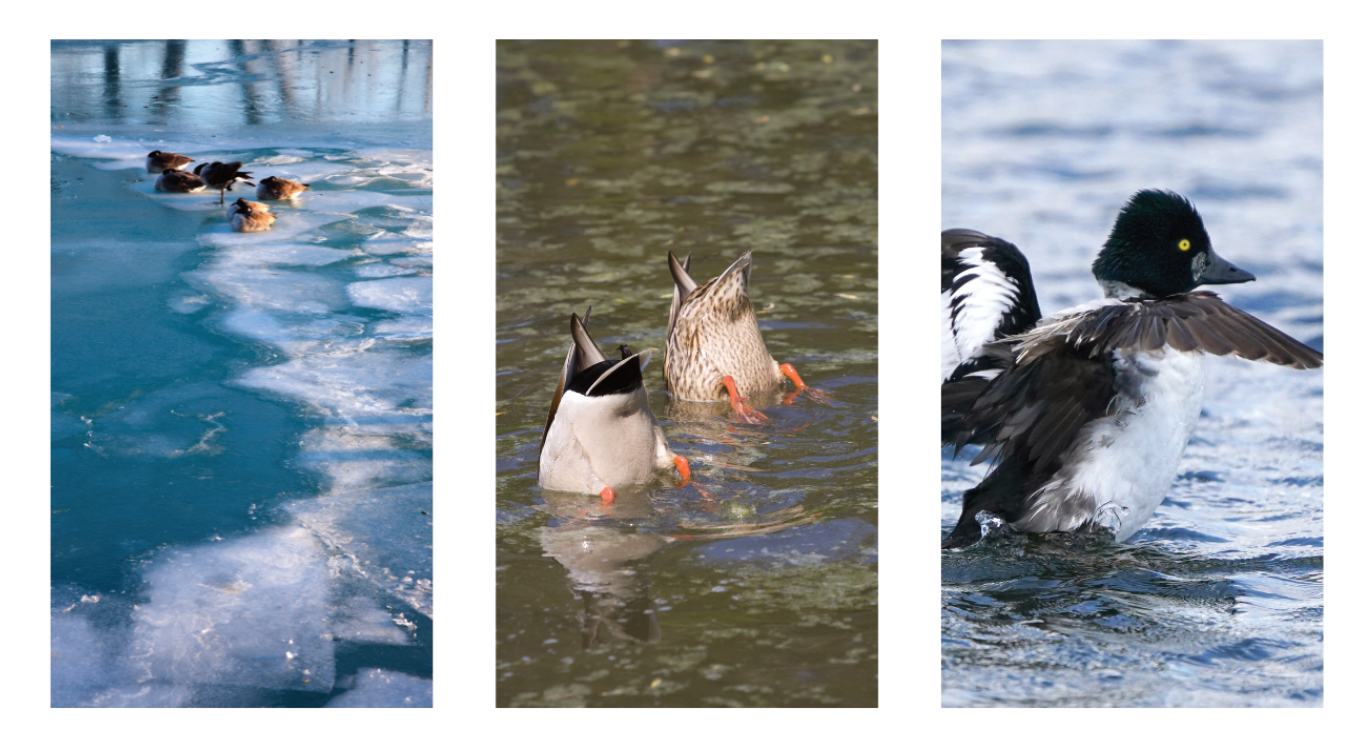
As the days begin to get longer and the sun a little bit stronger, I begin to think of the migration of the ducks and geese coming back north. They are definitely on the move this month, and I love to take the time to watch as the rivers and lakes open to see who first will be flying in.
Open water permitting you will see some of my favourite diving ducks like buffleheads, common mergansers, hooded mergansers, common goldeneye and the scaup family. These birds dive down to the fresh aqua plants for a food source and come back to the surface for air. While our dabbling ducks like the mallard and the wood ducks forage for food by tipping upside down on the surface to grab vegetation.
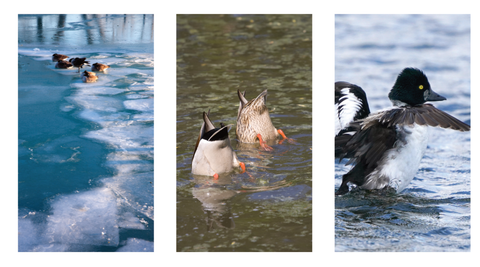
The hooded merganser’s male has an elaborate crest of white with a black border, it may be raised or flattened. You will see him prominently display his crest and seemingly dance on the water. Mergansers are the only ducks that specialize in eating fish. The hooded merganser is a smaller duck ranging through most of Canada and you will see them migrating in the early spring to breeding grounds. This cavity nester will also take advantage of any boxes put out for Wood Ducks.
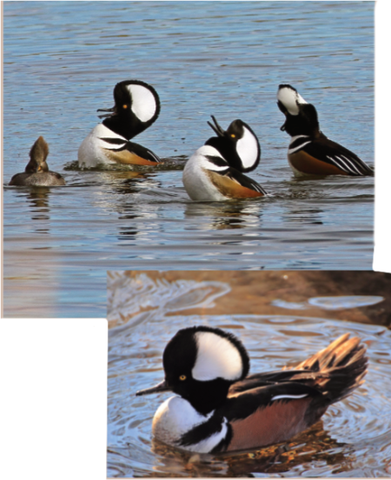
Common merganser’s breeding ground is right across Canada and it too migrates in smaller groups. They are diving ducks and feed mainly on a variety of fish. Watching them you can see their heads dipping underwater to spot the fish and then propel forward with both feet in unison to dive in pursuit. The common merganser nest in a variety of places, like, a large tree cavity, crevices in rocks, or holes under the tree roots and they will also use nesting boxes
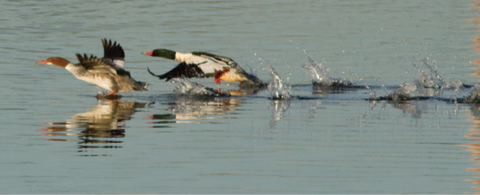
The buffleheads are very small diving ducks and their spring migration consists of smaller flocks. Their breeding grounds in Canada are lakes, ponds and rivers. This is a small enough duck that will use old nest holes of the Northern Flicker, giving it a ready source of good nest sites. Watch for their courting rituals where the male displays head-bobbing, wing-lifting and short display flights, most with crest feathers fully raised. Making these a favourite to watch.
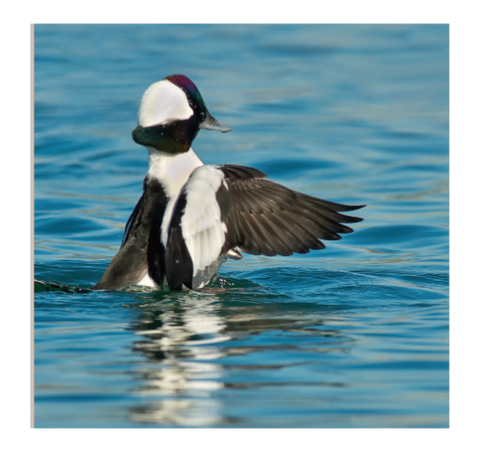
The male common goldeneye is easy to spot with the roundish white spot before their yellow eyes, with a black head and back contrast to their white chest and sides. They too range right across Canada for their breeding grounds. Often seen in small flocks but can also gather in a larger concentration. When feeding, all the birds in one section of a flock may dive at the same time. Their habitat is forested lakes, rivers and their breeding season requires large trees for nesting cavities close to clear, cold water. As in northern lakes and waters. Diet consists of crustaceans and aquatic insects, some plant material such as pondweeds round out their diet. For courting, several males may court one female and their courtship display of the male include throwing head far back with bill pointed skyward while uttering shrill call; also ritualized head-pumping and short flights with exaggerated takeoff and landing.

The mallard is probably the most familiar. With the male's green head that contrasts with yellow bill and white neck ring with reddish chest and grey body. They breed from Alaska to Quebec. Their habitat consists of marshes, wooded swamps, grain fields, ponds, rivers, lakes, bays, city parks. They are considered a dabbling duck, where they forage for food by submerging head and neck, up-ending, to graze on plucking seeds and grubbing for roots. The majority of the diet is plant material, including seeds, stems and roots of a vast variety of different plants, especially sedge, grasses, pondweeds, smartweeds, also acorn and other tree seeds and various types of waste grain. They also eat insects, crustaceans, tadpoles, frogs and earthworms, along with small fish. Pairs form in the fall-winter and they usually nest on the ground among concealing vegetation but maybe on a stump, or in a tree hollow. The nest is a shallow bowl of plant material gathered at the site, lined with down.

The unmistakable colour of the male wood duck, are beautiful and unique. Their habitat is wooded swamps, rivers, ponds, and favours shallow inland lakes, slow-moving rivers which are mainly those surrounded by deciduous or mixed woodland.
They mostly feed on aquatic plants and their seeds, fallen seeds of trees and shrubs, also insects and crustaceans. Acorns are a major part of the diet in many areas. They will also come to feed on waste grain in fields. They like the mallard forage in water by taking food from the surface, submerging head and neck and occasionally up-ending. It is wonderful to watch their courtship as the male involve postures that show off their colourful plumage. Nest sites are large tree cavities near water, up to 65’ above ground. They will use artificial nest boxes.
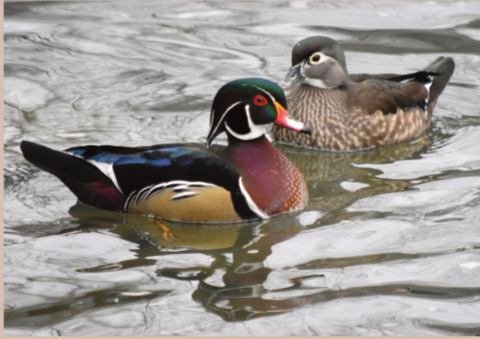
Enjoy the migration in spring - there is so much to see!
Author — Louise Beckinsale
High Quality Blend